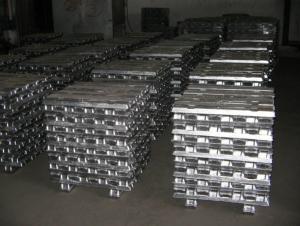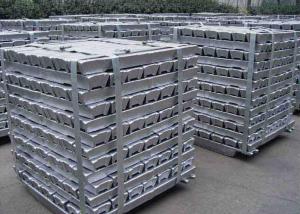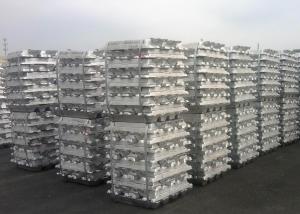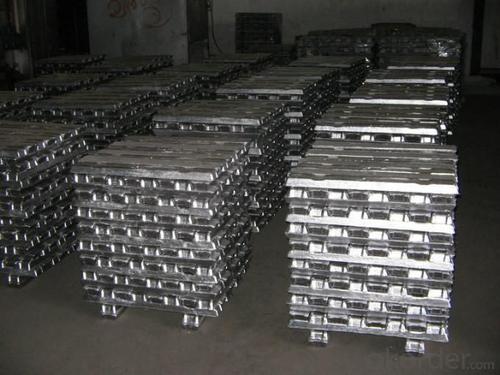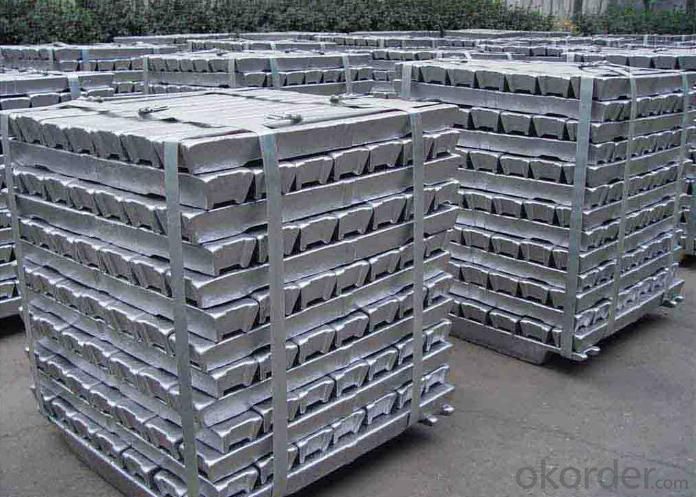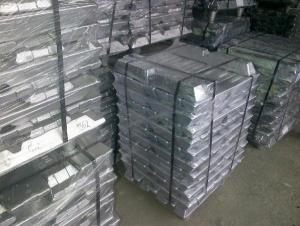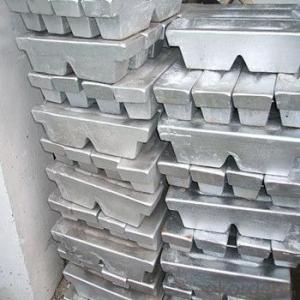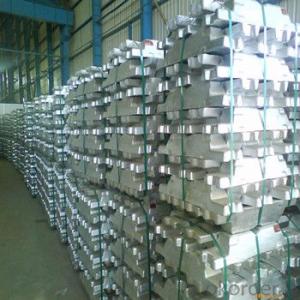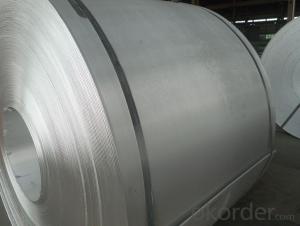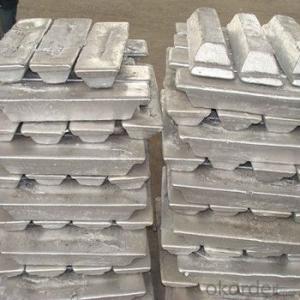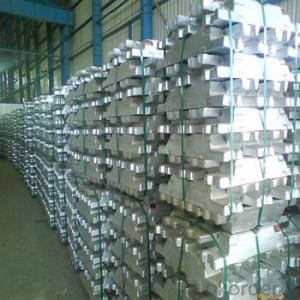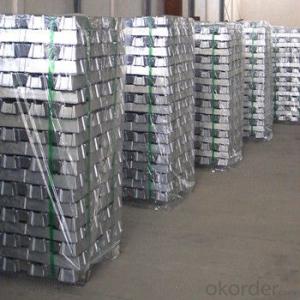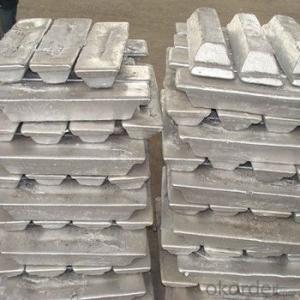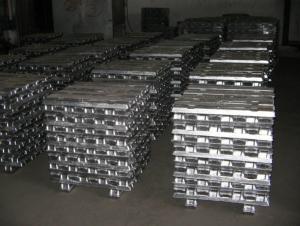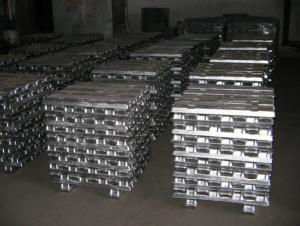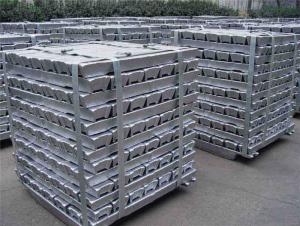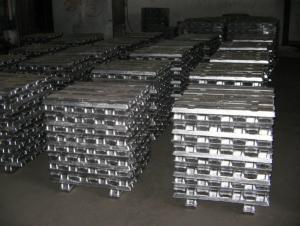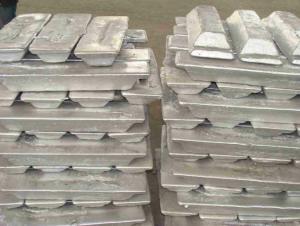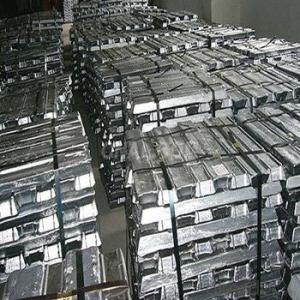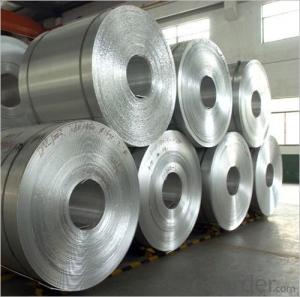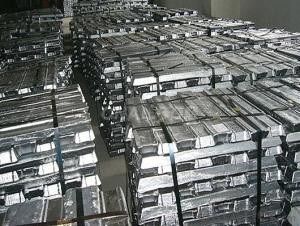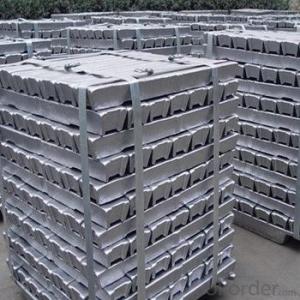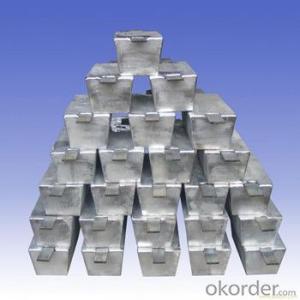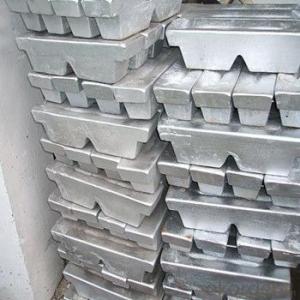Aluminum Ingots AA1050
- Loading Port:
- Shanghai
- Payment Terms:
- TT or LC
- Min Order Qty:
- 20 Tons m.t.
- Supply Capability:
- 1000 Sets Per Month m.t./month
OKorder Service Pledge
Quality Product, Order Online Tracking, Timely Delivery
OKorder Financial Service
Credit Rating, Credit Services, Credit Purchasing
You Might Also Like
1. Specifications of Aluminum Ingots AA1050
| Product Name | Aluminum Ingot |
| Chemical Composition | Al |
| Weight | 20/25kg |
| Al (Min) | 99%-99.9% |
| Appearance | silvery white |
| Advantages | easy control and operation, fast melting |
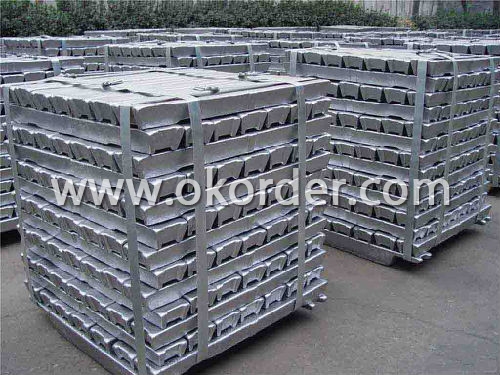
2. Usage/Application of Aluminum Ingots AA1050
A. mainly used for melting ingot
B. discontinuous melting with scrap
3.Packaging & Delivery of Aluminum Ingots AA1050
About 25Kg /Ingot, Packed in wooden case, Net weight 1000Kg/ Case, or as customer's requirements.
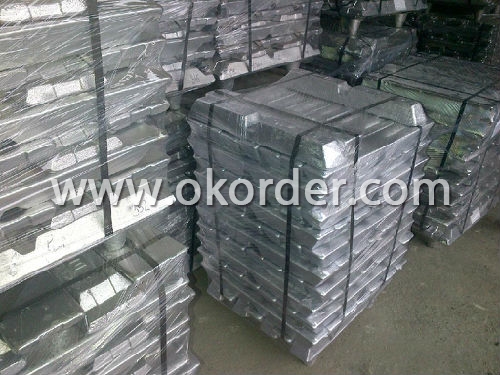
- Q: How are aluminum ingots used in the production of appliances?
- Aluminum ingots are used in the production of appliances as a primary raw material for manufacturing various components such as casings, frames, and structural supports. These ingots are melted down and transformed into different shapes through processes like casting, extrusion, or rolling, allowing them to be used in the construction of appliance parts. The lightweight and corrosion-resistant properties of aluminum make it a preferred choice for many appliances, including refrigerators, ovens, and air conditioners.
- Q: REGAL-S33N what is the aluminum ingot material?
- Aluminum, our daily industrial raw materials called aluminum ingot, according to the national standard (GB/T1196-93) should be called "remelting with aluminum ingot", but we are used to "aluminum ingot"". It is with the alumina cryolite produced by electrolysis.
- Q: Can aluminum ingots be used in the production of musical instruments?
- Yes, aluminum ingots can be used in the production of musical instruments. Aluminum is a lightweight and durable metal that can be molded into various shapes, making it suitable for the construction of instrument bodies, parts, and accessories.
- Q: What industries use aluminum ingots?
- Aluminum ingots are utilized by several industries due to their versatile properties and wide range of applications. Major industries heavily reliant on aluminum ingots include: 1. The automotive industry utilizes aluminum ingots to manufacture engine blocks, wheels, frames, and body panels. Aluminum's lightweight nature, corrosion resistance, and excellent thermal conductivity make it a preferred choice for improving fuel efficiency and reducing vehicle weight. 2. In the aerospace industry, aluminum ingots are extensively used to manufacture aircraft structures, wings, fuselage panels, and other components. Aluminum's high strength-to-weight ratio is ideal for building lightweight aircraft capable of withstanding the stresses of flight. 3. The construction industry relies on aluminum ingots for applications like windows, doors, roofing, and cladding systems. Aluminum's corrosion resistance, durability, and aesthetic appeal make it a popular choice for modern architectural designs. 4. The packaging industry extensively uses aluminum ingots to produce aluminum foils, cans, containers, and closures. Aluminum's excellent barrier properties, lightness, and recyclability make it a preferred material for preserving and protecting perishable items. 5. The electrical industry heavily depends on aluminum ingots to manufacture power transmission cables, electrical conductors, and wiring systems. Aluminum's high electrical conductivity, low weight, and cost-effectiveness make it a suitable alternative to copper in many electrical applications. 6. The marine industry employs aluminum ingots for fabricating boat hulls, masts, decks, and various components. Aluminum's corrosion resistance, lightness, and durability make it a preferred choice for constructing vessels that can withstand harsh marine environments. 7. The consumer goods industry utilizes aluminum ingots to manufacture cookware, furniture, appliances, and electronic devices. Aluminum's thermal conductivity, non-toxicity, and recyclability make it a popular material for consumer goods. These examples demonstrate the heavy reliance of various industries on aluminum ingots. Due to its advantageous properties, aluminum is widely used in machinery, transportation, energy, and even art and design sectors.
- Q: What is the process for smelting aluminum ingots?
- The process for smelting aluminum ingots involves several steps. First, bauxite ore is mined and refined to produce alumina. Next, the alumina is dissolved in a molten cryolite bath within an electrolytic cell. An electric current is then passed through the bath, causing the aluminum ions to be reduced and deposited on a carbon cathode as molten aluminum. This molten aluminum is then tapped and transferred to a holding furnace. The impurities in the molten aluminum are removed through various purification processes. Finally, the purified molten aluminum is poured into ingot molds, where it solidifies to form aluminum ingots.
- Q: How are aluminum ingots used in the production of sports equipment?
- Aluminum ingots are widely used in the production of sports equipment due to their lightweight, durable, and corrosion-resistant properties. These ingots serve as the primary material for various sports equipment, including baseball bats, tennis rackets, golf clubs, and bicycles. In the manufacturing process, aluminum ingots are melted and then poured into molds to create the desired shape and size of the sports equipment. The molten aluminum is then cooled and solidified, resulting in a strong and solid structure. One of the main advantages of using aluminum ingots is their lightweight nature. This property makes the sports equipment easier to handle and maneuver, allowing athletes to exert less effort during play. For example, aluminum baseball bats are renowned for their lightweight construction, enabling players to swing the bat with greater speed and accuracy. Furthermore, aluminum ingots offer excellent durability, ensuring a longer lifespan for the sports equipment. They are known for their resistance to wear and tear, making them ideal for intense sports activities. For instance, aluminum tennis rackets can withstand the high impact of tennis balls and maintain their shape and performance over a prolonged period. Additionally, aluminum ingots possess exceptional corrosion resistance. This property is beneficial for sports equipment that is exposed to various environmental conditions, such as bicycles. Aluminum bicycle frames made from ingots are resistant to rust and corrosion, providing a longer lifespan and enhanced performance. In conclusion, aluminum ingots play a crucial role in the production of sports equipment. With their lightweight, durable, and corrosion-resistant properties, they contribute to the creation of high-quality and high-performance sports gear, enabling athletes to excel in their respective sports.
- Q: What is the melting point of aluminum ingots?
- The melting point of aluminum ingots is approximately 660.3 degrees Celsius or 1220.5 degrees Fahrenheit.
- Q: Aluminum sold alone, high benefit ah, why do aluminum ingot?
- Oh, I'm doing metallurgy, aluminum magnesium alloy powder is simply the aluminum and magnesium ingot according to a certain proportion in the smelting furnace for smelting, and then by the atomization system by water to process alloy powder, finally sieve can be separated to size, which is full of gold powder.
- Q: Who knows, general aluminium ingot has those specifications?
- Several common aluminum ingotAluminum ingots for remelting --15kg (99.80%Al, 20kg):T shaped aluminum ingot --500kg, 1000kg (99.80%Al):High purity aluminium ingot --l0kg, 15kg (99.90% ~ 99.999%Al);Aluminium alloy ingots --10kg, 15kg (Al--Si, Al--Cu, Al--Mg);Slab --500 to 1000kg (for plate making);Round ingot --30 to 60kg (wire drawing).
- Q: How are aluminum ingots used in the production of power transmission towers?
- Aluminum ingots are used in the production of power transmission towers as a key material for constructing the tower structure. They are melted and cast into specific shapes to form the tower components, such as the main support columns, cross arms, and braces. Aluminum's lightweight yet strong properties make it an ideal choice for these applications, enabling the towers to efficiently support the transmission lines while minimizing the overall weight and cost of the structure.
We are a well-known enterprise specializing in the production and sales of aluminum sheets and coils.
Since the establishment of us, we have been devoted to setting up a good CIS and completely implementing ISO9001 quality management system.
1. Manufacturer Overview
| Location | Henan,China |
| Year Established | 1993 |
| Annual Output Value | Above US$200 Million |
| Main Markets | Mid East;Eastern Europe;North America |
| Company Certifications | ISO 9001:2000;ISO 14001:2004;OHSAS 18001 |
2. Manufacturer Certificates
| a) Certification Name | |
| Range | |
| Reference | |
| Validity Period |
3. Manufacturer Capability
| a) Trade Capacity | |
| Nearest Port | Shanghai |
| Export Percentage | 30%-50% |
| No.of Employees in Trade Department | 21-50 People |
| Language Spoken: | English;Chinese |
| b) Factory Information | |
| Factory Size: | Above 100,000 square meters |
| No. of Production Lines | Above 10 |
| Contract Manufacturing | OEM Service Offered;Design Service Offered |
| Product Price Range | Average |
Send your message to us
Aluminum Ingots AA1050
- Loading Port:
- Shanghai
- Payment Terms:
- TT or LC
- Min Order Qty:
- 20 Tons m.t.
- Supply Capability:
- 1000 Sets Per Month m.t./month
OKorder Service Pledge
Quality Product, Order Online Tracking, Timely Delivery
OKorder Financial Service
Credit Rating, Credit Services, Credit Purchasing
Similar products
Hot products
Hot Searches
Related keywords
